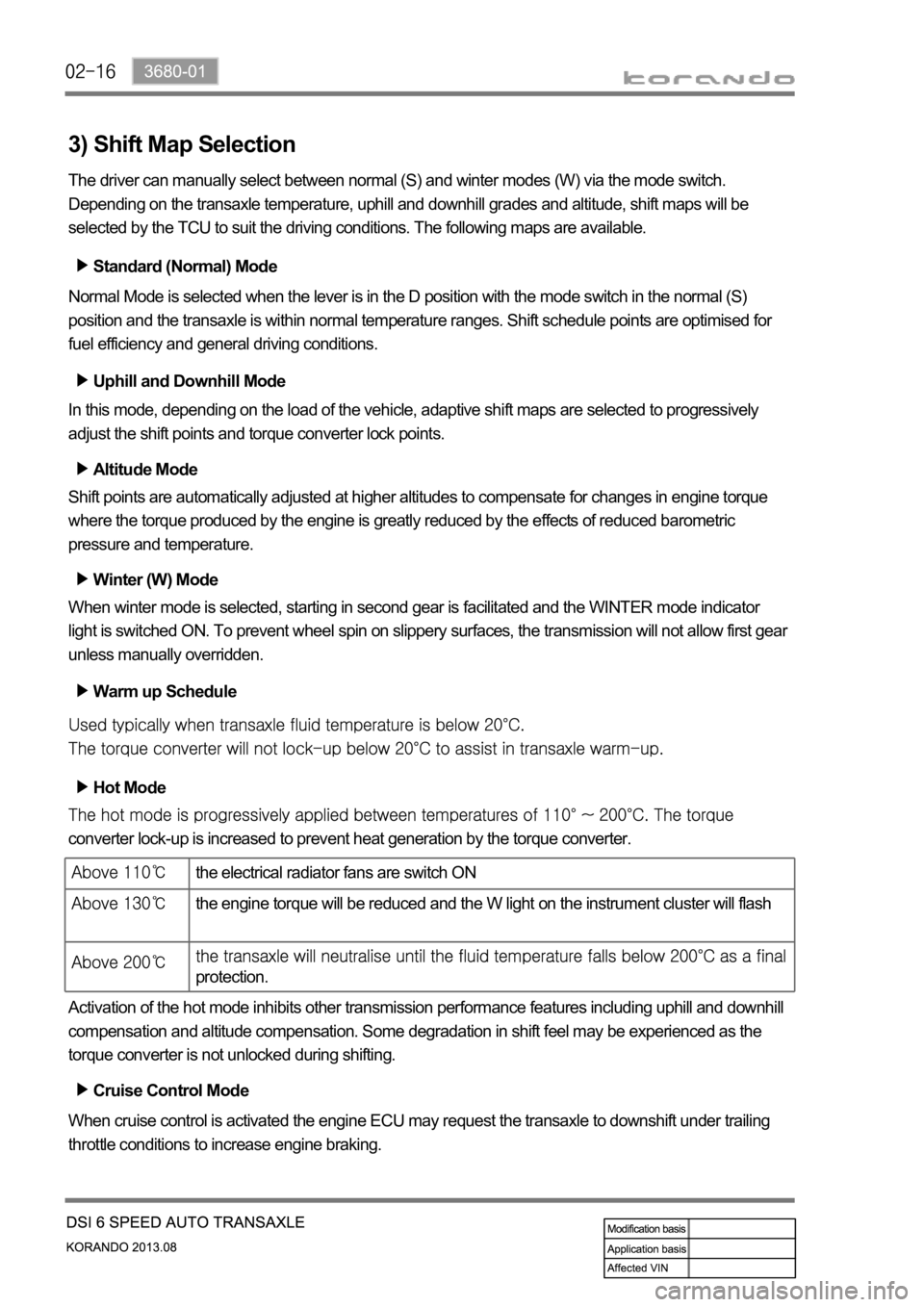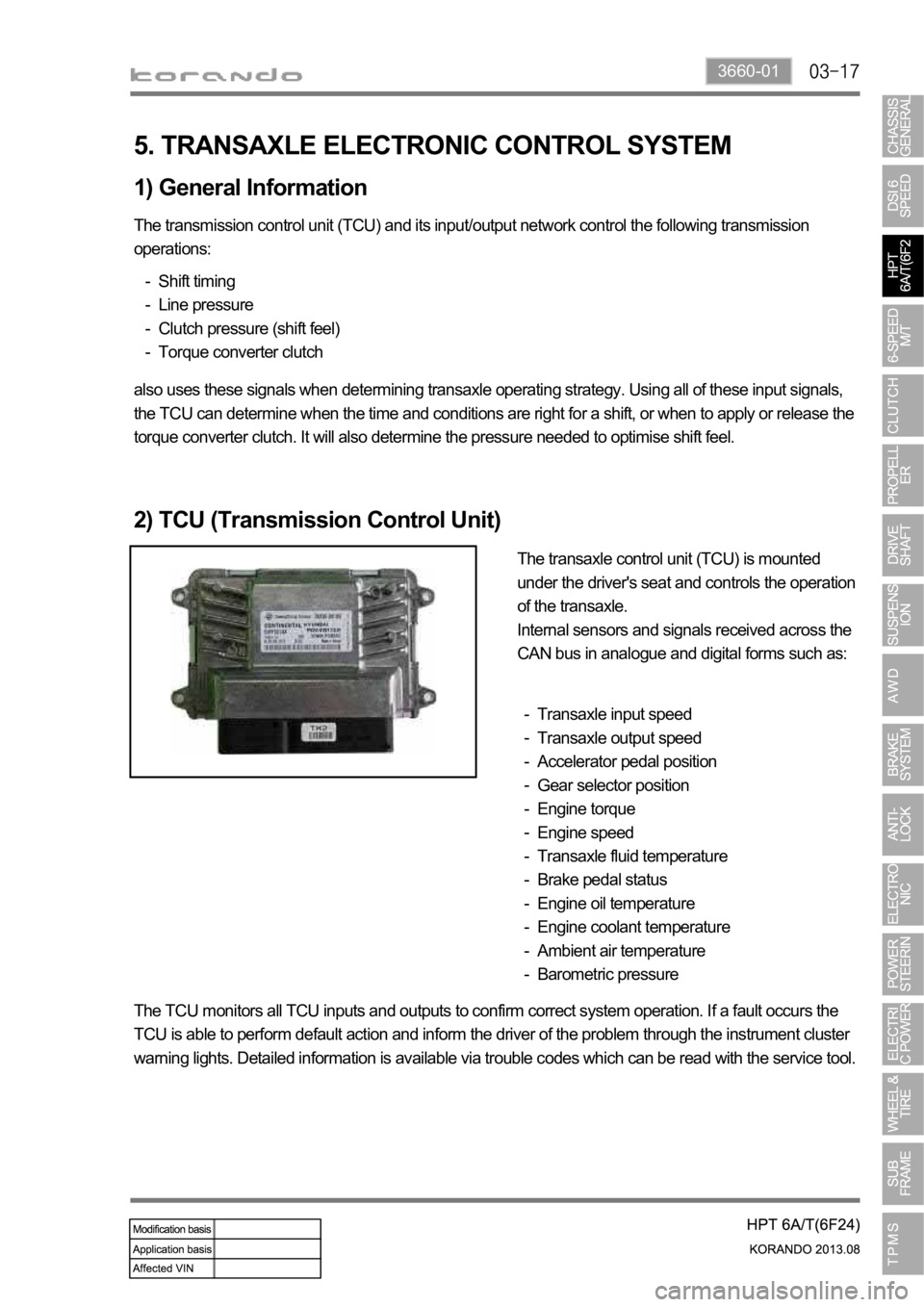Page 905 of 1336
(5) Fog lamp
The fog lamp is operated by the fog lamp switch only when the headlamp (tail lamp) is operating.
The front and rear fog lamps go off when turning the ignition switch or headlamp (tail lamp) switch to the
"OFF" position.
Front
Rear
(EU only)
Rear fog light
Front fog lamp
Page 911 of 1336
(8) Stop lamp operation process
Depressing the brake pedal lights on the stop lamps by a signal from the stop lamp switch fitted to the
brake pedal and releasing the brake pedal turns off it.
(9) Backup lamp operation process
When shifting the TGS lever into the "R" position with the ignition switch "ON", the backup lamps come
on. If the lever is placed in other positions, the lamps go off.
High mounted stop lamp
Rear combination stop lamp
Backup lamp
Page 930 of 1336
Rain sensing unitMultifunction wiper switch
AUTO and sensitivity control
2. RAIN SENSING SYSTEM
In the rain sensing wiper operation system, the rain sensing unit only sends the information about the
amount of rain drops to the BCM, and it does not operate the wiper directly. The wiper and washer are
controlled by the BCM according to the driver's choice.
This sensor emits infrared rays through LED
and then detects the amount of rain drops
by receiving the rays reflected off the
sensing section (rain sensor mounting
section on the windshield) with photodiode.AUTO: Wiper operates automatically by rain
sensor
FAST <-------> SLOW:
Auto delay/auto speed control.
A position that can control the sensitivity for
the amount of rains on the windshield and
transmit the wiping request signal
accordingly.
Rain sensor emitter lens
Auto light sensor sensing
portion
Page 971 of 1336
8910-05
No. Name Description
9 Disc slot Insert or eject a disc to play
10 CD button Select CD/MP3 disc play function
11 Disc eject button Eject a disc
12 Station memory button
[1~6]
13 Power/mute button with
volume dialBriefly press: Switch the system on, activate/deactivate mute
Pause ON/OFF
Press and hold: Switch the system off
Turn dial: adjust volume
14 [ENTER] button,
[TUNE]/[FILE] dialTurn dial: change frequency, song or menu
Press dial: Change or select item or setting value
Press and hold dial: Turn off display window backlight (comes on
if any of buttons is pressed)
Radio mode
Briefly press: Select a stored station directly
Press and hold: Store the listening broadcasting frequency
MP3/CD mode -
-
Page 994 of 1336
A. Indicators on instrument cluster
C. HECU assembly
The HECU assemblies for ABS and ESP have
similar appearance but they have different inner
structure and connector connections from each
other. D. Front brake assembly
The disc brake for 4WD vehicle is the same with
the one for 2WD vehicle.
7. BRAKE SYSTEM AND ESP SYSTEM LAYOUT
B. Master cylinder assembly
Description for master cylinder in this chapter is
based on ABS/ESP equipped vehicle. For CBS,
there is an extra pressure valve mounted to the
master cylinder.
CaliperDisc
Parking brake
warning light
ABS warning lamp
ESP indicator
Page 1015 of 1336
3680-01
This information is used by the TCU to decide which shift pattern to select and for shift energy
management. Electro-hydraulic solenoid valves and variable bleed solenoids control the transaxle gear
changes.
Six variable bleed solenoids and four on/off solenoids are used to direct transaxle fluid flow to control the
fluid pressure within the three clutches and two bands. Separate pressure regulators are used
exclusively for torque converter clutch control and main transaxle line pressure.
The TCU monitors all TCU inputs and outputs to confirm correct system operation. If a fault occurs the
TCU is able to perform default action and inform the driver of the problem through the instrument cluster
warning lights. Detailed information is available via trouble codes which can be read with the service tool.
Page 1016 of 1336

3) Shift Map Selection
The driver can manually select between normal (S) and winter modes (W) via the mode switch.
Depending on the transaxle temperature, uphill and downhill grades and altitude, shift maps will be
selected by the TCU to suit the driving conditions. The following maps are available.
Standard (Normal) Mode
Normal Mode is selected when the lever is in the D position with the mode switch in the normal (S)
position and the transaxle is within normal temperature ranges. Shift schedule points are optimised for
fuel efficiency and general driving conditions.
Uphill and Downhill Mode
In this mode, depending on the load of the vehicle, adaptive shift maps are selected to progressively
adjust the shift points and torque converter lock points.
Altitude Mode
Shift points are automatically adjusted at higher altitudes to compensate for changes in engine torque
where the torque produced by the engine is greatly reduced by the effects of reduced barometric
pressure and temperature.
Winter (W) Mode
When winter mode is selected, starting in second gear is facilitated and the WINTER mode indicator
light is switched ON. To prevent wheel spin on slippery surfaces, the transmission will not allow first gear
unless manually overridden.
Warm up Schedule
Hot Mode
converter lock-up is increased to prevent heat generation by the torque converter.
Activation of the hot mode inhibits other transmission performance features including uphill and downhill
compensation and altitude compensation. Some degradation in shift feel may be experienced as the
torque converter is not unlocked during shifting.
Cruise Control Mode
When cruise control is activated the engine ECU may request the transaxle to downshift under trailing
throttle conditions to increase engine braking.
the electrical radiator fans are switch ON
the engine torque will be reduced and the W light on the instrument cluster will flash
protection.
Page 1043 of 1336

3660-01
5. TRANSAXLE ELECTRONIC CONTROL SYSTEM
1) General Information
The transmission control unit (TCU) and its input/output network control the following transmission
operations:
Shift timing
Line pressure
Clutch pressure (shift feel)
Torque converter clutch -
-
-
-
also uses these signals when determining transaxle operating strategy. Using all of these input signals,
the TCU can determine when the time and conditions are right for a shift, or when to apply or release the
torque converter clutch. It will also determine the pressure needed to optimise shift feel.
2) TCU (Transmission Control Unit)
The transaxle control unit (TCU) is mounted
under the driver's seat and controls the operation
of the transaxle.
Internal sensors and signals received across the
CAN bus in analogue and digital forms such as:
Transaxle input speed
Transaxle output speed
Accelerator pedal position
Gear selector position
Engine torque
Engine speed
Transaxle fluid temperature
Brake pedal status
Engine oil temperature
Engine coolant temperature
Ambient air temperature
Barometric pressure -
-
-
-
-
-
-
-
-
-
-
-
The TCU monitors all TCU inputs and outputs to confirm correct system operation. If a fault occurs the
TCU is able to perform default action and inform the driver of the problem through the instrument cluster
warning lights. Detailed information is available via trouble codes which can be read with the service tool.